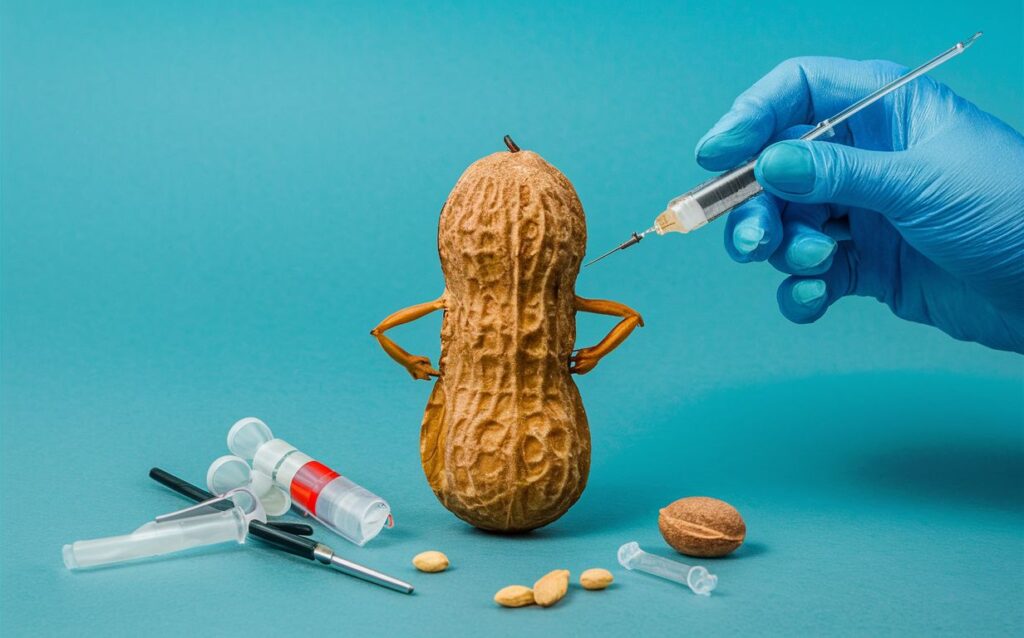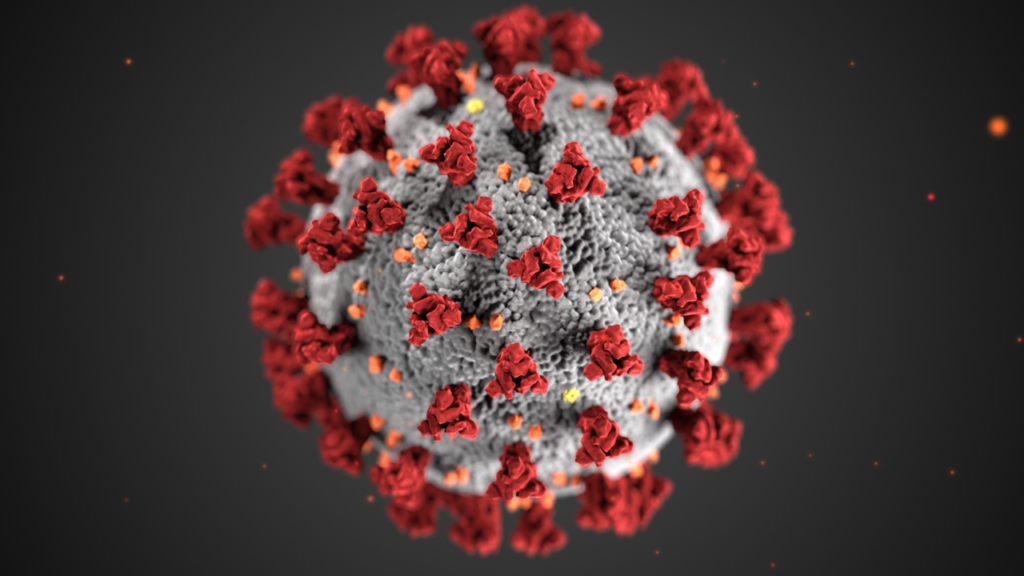
Image generated using Ideogram AI.
By Mariana Meneses
If you are one of a very large number of people with food allergies, have you ever imagined a world where allergies no longer dictate what you can eat?
What if there were a way to repurpose existing drugs to tackle severe food reactions, providing relief and freedom to those affected?
In an earlier TQR article, we discussed how machine learning is boosting allergy research and therapy, increasing the diagnosing accuracy and efficacy of personalized treatments. Now we explore how the repurposing of a long-used drug may offer hope to severely allergic individuals and those who care for them.
A recent study published in The New England Journal of Medicine marks an important development in food allergy treatment, revealing that an asthma drug can significantly reduce the risk of severe allergic reactions to peanuts and other foods. Administered to both children and adults with severe allergies, omalizumab enabled 67% of recipients to tolerate small amounts of peanuts without adverse reactions, compared to just 7% of those who received a placebo. This milestone prompted the US Food and Drug Administration (FDA) to approve it as a treatment for food allergies.
This drug consists of a monoclonal antibody targeting IgE antibodies responsible for allergic reactions, which was shown to offer immediate relief compared to other treatments based on gradual dosage escalation of peanut-protein powder.
Monoclonal antibodies (mAbs) are lab-made proteins that can target specific substances in the body, like proteins or cells. They mimic the antibodies naturally produced by the immune system to fight infections. These mAbs are designed to attach to targets in the body, such as cancer cells or molecules involved in autoimmune diseases. They help the immune system recognize and attack these targets, providing targeted treatment options for many conditions (US National Library of Medicine).
“Immunoglobulin E (IgE) are antibodies produced by the immune system” (American Academy of Allergy, Asthma & Immunology).
It is worth noting that, according to Nature, the medication needs to be administered via injection every two to four weeks, with the frequency determined by the individual’s weight and the severity of their allergic response. Moreover, the cost of each injection can exceed US$1,400.
Despite its efficacy, this drug does not eliminate allergies entirely but raises the threshold for triggering reactions. Thus, ongoing research investigates the drug’s variability in response among individuals and explores its cost-effectiveness against alternative treatments, such as early allergen exposure in infancy.

Repurposing fosters resourcefulness, sustainability, and innovation by finding new uses for existing materials, products, or ideas, ultimately maximizing their value, and minimizing waste. Image: Onya
Drug repurposing is not new.
Scientists follow specific, established methods. Many times in history, drugs that were developed for one purpose were later discovered to be useful for treating different infirmities. For example, some medications initially intended for conditions like high blood pressure or sedation unexpectedly ended up helping with issues like erectile dysfunction or cancer. These discoveries often happen by accident during clinical trials or through observations of side effects.
It shows how exploring the effects of drugs beyond their original purpose can lead to significant medical breakthroughs, offering hope and new treatment options for various health concerns.

“Ultrastructural morphology exhibited by the 2019 Novel Coronavirus.” Image: CDC/ Alissa Eckert, MS; Dan Higgins, MAM
For instance, during the COVID-19 pandemic, drug repurposing emerged as a vital strategy, utilizing existing FDA-approved drugs for new therapeutic purposes.
Researchers at the Wyss Institute pursued various approaches, including identifying drugs effective against COVID-19, improving drug delivery methods, and modifying drugs for enhanced efficacy. Through innovative techniques like organ chips and attaching drugs to blood cells, they demonstrated the potential of repurposed drugs in treating COVID-19-related inflammation. These efforts underscore the value of repurposing existing drugs to rapidly address public health challenges.
An organ-on-a-chip, also called an organ chip, is a small device resembling a human organ, made with tiny channels containing living human cells. These chips mimic the functions of organs, like breathing for a lung chip, enabling scientists to study human biology in a lab without using humans or animals. They’re crucial in biomedical research, drug development, disease modeling, and personalized medicine, aiding scientists in understanding organ function, disease impacts, and potential treatments. In short, organ chips are valuable tools for precise and ethical study of human health and disease (Wikipedia).
Attaching drugs to blood cells is a bit like putting a package on a delivery truck: the cell carries the drug to different parts of the body. This method allows drugs to go straight to where they’re needed, making them work better and causing fewer side effects. Also, since blood cells live a long time in the body, drugs attached to them stick around longer, providing a steady treatment. Plus, these drugs are protected from breaking down in the bloodstream, so more of the medicine reaches the right places. Overall, it’s a promising way to make treatments safer and more effective. (Sara Biagiotti and co-authors, 2023).
This advance reminds us of how complex the human body is, and, how productive the scientific method has been in expanding the boundaries of knowledge.
Despite meticulous research and testing, unexpected outcomes often occur, demonstrating the intricate interplay of so many variables in biological systems.
These surprises also highlight the adaptability and ingenuity of scientists in repurposing medications for different conditions. It underscores the importance of continued exploration, innovation, and collaboration within the scientific community to unlock the full potential of existing treatments and discover new ones to improve human health and well-being.
Craving more information? Check out these recommended TQR articles:
- Decrypting Security: How Machine Learning is Boosting Allergy Research and Treatment
- Quantum Sensing’s Revolutionary Potential for Cancer Treatment, Navigation, and Precision Measurement
- Bodies of the Future: How AI is Assisting Human Reproduction and Organ Transplantation
- AI Advances The Use of Stem Cells in Personalized Medical Treatment
- Before We Move Out: Life Outside Earth Could Feature French Fries and Blood Deficiencies



